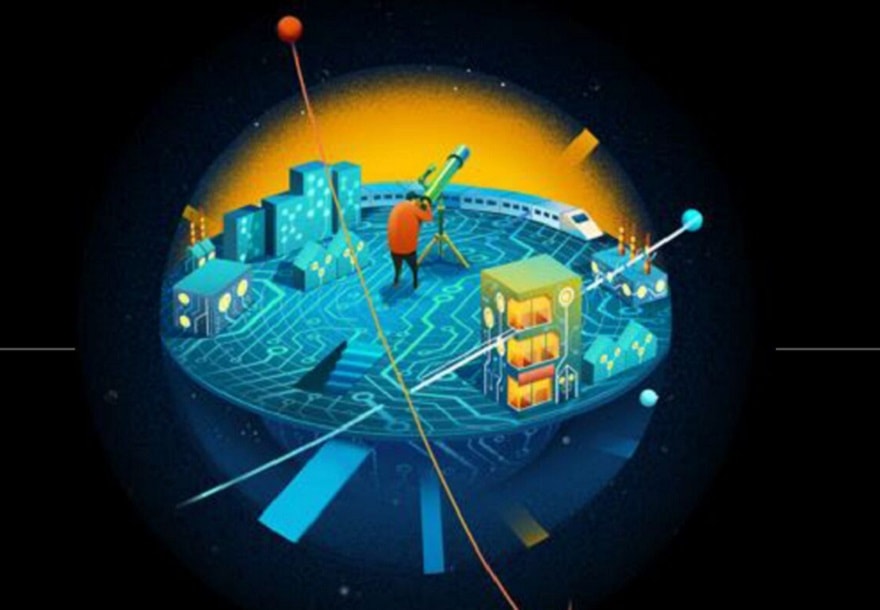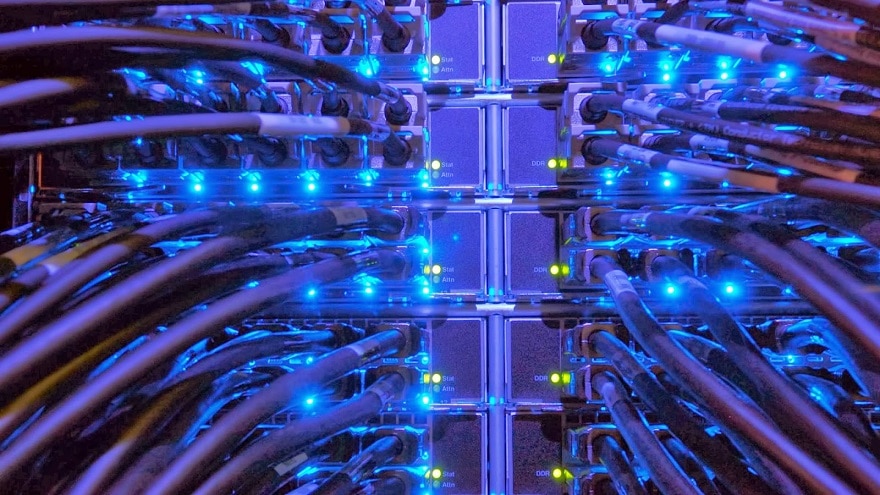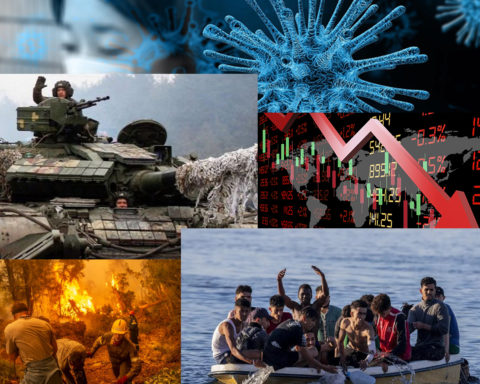Un halo technologique nous entoure. Il n’est pas un secteur d’activité, pas une entreprise, pas une fonction de l’entreprise, qui ne soit aujourd’hui transformé par des mutations technologiques profondes. Alors que ces mutations concernaient auparavant essentiellement l’offre et le système de production des entreprises, elles ont aujourd’hui des répercussions bien plus larges, en révolutionnant les relations avec les clients ou les partenaires, ou encore les modes de collaboration entre salariés. C’est ce que révèle la dernière étude Deloitte « Tech Trends 2017 – L’Entreprise cinétique » confirmant que, dans de nombreux domaines, la frontière technologique ne cesse d’être repoussée, alimentant non plus les services IT mais le cœur même de toutes les directions métiers.
Les « Tech Trends 2017 » sont emblématiques de ces mutations profondes de l’entreprise : sophistication croissante de l’analytique et des traitements algorithmiques, recentrage sur l’utilisateur pour lui offrir l’expérience la plus fluide et riche possible, anticipation des ruptures technologiques à venir.
« Dans la plupart des entreprises, la technologie est considérée comme une priorité et mobilise fortement l’attention des dirigeants. Ces derniers l’examinent sous trois angles complémentaires. D’abord, l’angle stratégique : quelles innovations sont susceptibles de remettre en cause les modèles économiques existants ? Ensuite, l’angle opérationnel : comment peuvent-elles contribuer à améliorer la productivité ? Enfin, et c’est assez nouveau, l’angle organisationnel : le capital humain de l’entreprise, son mode de fonctionnement et sa culture, lui permettent-ils de tirer tout le parti des technologies émergentes ? Au cours des dernières années, la technologie a migré de la périphérie vers le centre des réflexions stratégiques, elle alimente aujourd’hui l’ensemble des directions métiers. En parallèle, le rôle des DSI est monté en puissance .», résume Sébastien Ropartz, Associé responsable Deloitte Digital.
1. Tendance #1 – Copier, apprendre, seconder : l’intelligence des machines
De plus en plus d’entreprises devraient associer, dans les deux ans à venir, l’intelligence collective de leurs collaborateurs avec des capacités d’analyse informatique poussées. Pour ce faire, elles pourront s’appuyer à la fois sur les progrès spectaculaires des algorithmes, le cloud, le Big Data, mais aussi, sur de nouveaux modes de coopération entre l’homme et la machine.
L’intelligence artificielle a réalisé des avancées considérables dans une multitude de directions différentes : apprentissage automatisé, réseaux de neurones, informatique cognitive, ou encore RPA (robotic process automation), qui permet à la machine d’assimiler un processus répétitif sans qu’il soit nécessaire de la programmer, mais en « observant » un humain le réaliser.
Dans certains cas, l’intelligence des machines permettra aux entreprises d’automatiser totalement des processus répétitifs, à faible valeur ajoutée, qui nécessitaient auparavant un travail humain.
Mais surtout, elle leur permettra d’améliorer la performance de leurs salariés et l’expérience de leurs clients. Les salariés pourront ainsi disposer de puissants outils d’analyse pour remplir leurs tâches plus efficacement. Les clients, quant à eux, bénéficieront de réponses personnalisées à leurs demandes, instantanément, grâce à des « chatbots ».
Pour la plupart des entreprises, les partenariats – que ce soit avec des laboratoires de recherche universitaires, des grandes entreprises d’Internet ou des start-ups – constitueront le point de passage recommandé pour défricher ce sujet.
Tendance #2 – Extension du domaine de l’analytique : les dark analytics
Si les entreprises sont encore loin d’avoir résolu toutes les questions liées au Big Data, elles perçoivent cependant mieux leur valeur latente et ont commencé à expérimenterdes cas d’usage. De fait, 64 % des DSI projettent d’investir dans les capacités techniques et humaines pour exploiter les données de leur entreprise au cours des deux prochaines années.
Mais il reste une grande quantité de données non utilisées aujourd’hui. Cette « matière noire » informationnelle devrait commencer à livrer ses secrets, dans les 18 à 24 mois qui viennent pour les entreprises pionnières. La nouvelle frontière du Big Data, les « dark analytics », recouvre trois types de données aujourd’hui négligées : les informations « dormantes » de l’entreprise, les données non structurées (e-mails, photos ou vidéos) et le web invisible (« deep web ») qui, bien qu’accessible publiquement, n’est pas indexé par les moteurs de recherche classiques.
Ces données recèlent des indications à forte valeur ajoutée pour les entreprises qui sauront les faire parler. Au niveau mondial, les gains de productivité pourraient s’élever à 430 milliards de dollars d’ici 2020. Pour se donner toutes les chances de succès, les entreprises devront privilégier une perspective métier, sous peine de dissiper leurs efforts, et s’ouvrir sur leur environnement, qui détient probablement une partie des données dont elles ont besoin.
Tendance #3 – Fusion du monde physique et numérique : la réalité mixte
La présence de la technologie dans les entreprises va tendre à s’estomper, au profit d’interactions plus naturelles avec l’utilisateur. C’est la troisième tendance des 18 à 24 prochains mois : la réalité mixte, autorisée par la convergence de la réalité virtuelle ou augmentée, et de l’Internet des objets.
La réalité mixte laisse l’utilisateur évoluer dans son environnement familier, sur lequel elle superpose une couche virtuelle d’informations, par le biais d’un casque de réalité augmentée ou d’un dispositif de projection. Elle lui permet d’interagir avec l’ordinateur par la voix ou les gestes, captés par des dispositifs portés sur lui (wearables) ou situés autour de lui. Le principal bénéfice de la réalité mixte est de reculer la technologie à l’arrière-plan : l’utilisateur dispose d’une totale liberté d’action, sans être gêné par un clavier ou un écran tactile. Il est donc plus engagé et plus efficace.
Les entreprises vont progressivement expérimenter les applications de la réalité mixte : support aux opérateurs de production ou de maintenance, formation, communication, marketing et service client, nouvelles expériences de shopping, etc. Néanmoins, elles vont devoir pour cela résoudre des questions complexes d’ergonomie, de technique et de cyber-sécurité.
Tendance #4 – Conserver une longueur d’avance : les technologies exponentielles
Les technologies numériques ont démontré à quel point l’innovation pouvait perturber les modèles économiques ou organisationnels établis, voire mettre en péril les entreprises insuffisamment vigilantes. Par conséquent, les dirigeants – notamment les DSI – prendront soin de garder un œil sur des domaines technologiques aujourd’hui très fertiles où, même si l’horizon de mise en application paraît plus distant, de l’ordre de 3 à 5 ans, des innovations de ruptures pourraient avoir des répercussions profondes sur leur activité.
Au rang de ces technologies « exponentielles » figurent les nanotechnologies, les biotechnologies, l’informatique quantique et le stockage de l’énergie.
« L’importance de la veille technologique et de la « culture technologique » des dirigeants n’a jamais été aussi grande. Les organisations gagnantes seront celles qui parviendront à anticiper non pas simplement l’innovation incrémentale, qui améliore à la marge leur productivité ou les fonctionnalités de leurs produits et services, mais bien l’innovation radicale – celle qui leur permet de redéfinir leur secteur d’activité ou de réinventer leur modèle de fonctionnement », conclut François-Xavier Leroux, Directeur Deloitte Digital.
L’entreprise cinétique adopte le mouvement permanent. Elle développe la dextérité nécessaire pour surmonter l’inertie opérationnelle et prospérer dans des environnements d’affaires en évolution constante. Dans ce bruit médiatique nourri par les Cassandre et les faux prophètes, écouter les signaux faibles est une gageure. Faire des choix dans cet environnement n’est pas aisé : seule une part des avancées technologiques sont créatrices de valeur et seule leur connaissance intime permet de les discriminer.
Rester spectateur n’est donc plus une option : les mentalités doivent évoluer pour accepter les changements de cap, ces derniers étant beaucoup plus durs à effectuer à l’arrêt. Se mettre en mouvement permet de capter l’énergie nécessaire à la maîtrise de son destin : expérimenter des excursions en dehors de sa zone de confort, former les employés à se former par eux-mêmes et entre eux, nouer des partenariats pour étendre les capacités de l’entreprise au-delà de ses frontières, revendiquer des droits sur de nouvelles sources de données, inventer la collaboration avec les machines…
Prendre de la vitesse pour prendre de la hauteur. L’entreprise cinétique doit être en mesure de se nourrir de ce mouvement qui l’entoure et l’anime, de cette évolution des technologies, des organisations, des services et des usages qui constitue aujourd’hui une force de traction et de transformation formidable.
Retrouver l’intégralité des tendances dans l’étude Tech Trends 2017 et notamment : l’IT sans frontières, la généralisation d’une architecture SI flexible, « everything-as-a-service »et la blockchain ou l’économie de la confiance.
Méthodologie
Pour la cinquième année consécutive, l’étude Tech Trends s’appuie sur une méthodologie spécifique, destinée à identifier les tendances d’investissement et d’innovation technologiques des entreprises. Deloitte France adapte l’étude Tech Trends publiée aux Etats-Unis en tenant compte du contexte propre aux entreprises françaises. Les tendances sont sélectionnées sur la base des retours de clients sur leurs priorités actuelles et futures ; des points de vue d’acteurs éminents de l’industrie ou du monde universitaire ; des travaux de recherche d’analystes et de groupes de réflexion sur les technologies ; des feuilles de route et priorités d’investissements de start-up, de capital-risqueurs et des principaux fournisseurs de technologie ; ainsi que des idées insufflées par des groupes de travail collaboratifs et des exemples recueillis au sein du réseau de professionnels Deloitte comprenant plus de 200 000 experts à travers le monde.
S’abonner
Connexion
0 Commentaires
Inline Feedbacks
View all comments












